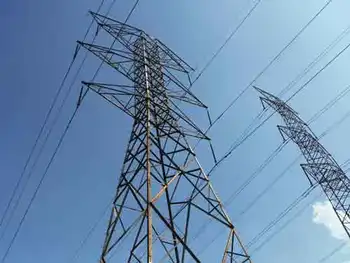By ASSOCIATED PRESS
CSA Z462 Arc Flash Training - Electrical Safety Essentials
Our customized live online or in‑person group training can be delivered to your staff at your location.

- Live Online
- 6 hours Instructor-led
- Group Training Available
DENVER — The most powerful geomagnetic storm measurable walloped Earth recently, knocking out some airline communications but apparently causing no large power outages or other major problems.
The most disruptive storm to hit Earth since 1989 was unleashed by the fourth-most powerful solar flare yet seen, NASA said.
The gigantic cloud of highly charged particles hurled from the sun posed a threat to electricity utilities, high-frequency radio communications, satellite navigation systems and TV broadcasts. Space forecasters expect more turbulence on the sun for a week.
The biggest immediate effect was a blackout of high-frequency voice-radio communications for planes flying polar routes.
But airliners in an emergency could still communicate through VHF contact with another aircraft or military monitoring station, said Louis Garneau, a spokesperson for the company that handles Canada's civil aviation navigation service.
The particle storm, 13 times larger than Earth, was rated a G5, the highest intensity on scientists' scale of space weather. Space observers have measured G5 storms five times in the past 15 years but few of them hit Earth so directly.
This flare whipped through the solar system at more than 8 million km/h, taking just 19 hours to travel close to 150 million kilometres from the sun.
U.S. federal scientists said it collided with Earth's magnetic field at 1:13 a.m. October 29, 12 hours earlier than predicted.
Such storms pose no direct threat to people on the ground because Earth's thick atmosphere deflects and absorbs incoming charged particles. But this one may produce auroras in the northern night sky visible as far south as El Paso, Texas.
The last time a G5 storm hit Earth was in 1989; it damaged the power grid and caused electrical blackouts in Quebec.
Larry Combs, forecaster for the space weather centre in Boulder, Colo., said, "We know that our power grids are definitely feeling the effects of this.''
Space scientists in North America and Europe and commercial satellite operators shut down some delicate instruments and turned them away from the storm's blast. Solar panels are especially vulnerable.











